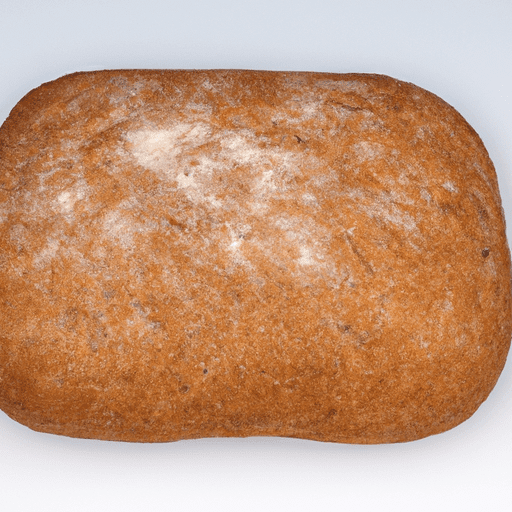The Delightful World of Potato Bread: A Versatile and Nourishing Delicacy
Potato bread, the unsung hero of the bread world, is a delightful and versatile baked good that deserves more recognition for its unique qualities. Combining the fluffy goodness of bread with the earthy, comforting flavors of potatoes, this rustic loaf is a must-try for every culinary enthusiast. In this blog post, we will explore the rich taste, common uses, nutritional value, and intriguing history of potato bread.
A Taste Sensation That Never Disappoints
Potato bread boasts a remarkable texture and a distinctive taste that sets it apart from other bread varieties. The addition of mashed potatoes to the dough creates a moist and tender crumb, ensuring a pleasant and smooth eating experience. The slight hint of sweetness and mild earthiness from the potatoes lend a unique flavor profile to the bread, making it an ideal choice for both sweet and savory applications. Whether toasted and slathered with butter or used to make a mouthwatering sandwich, potato bread is sure to satisfy any craving.
Versatility That Knows No Bounds
Potato bread’s incredible versatility makes it a staple in both home kitchens and professional bakeries. Its mild flavor and soft texture make it an excellent base for sandwiches, complimenting any filling from classic deli meats to indulgent vegetarian combinations. Additionally, its inherent moistness keeps the bread from becoming dry, even after toasting, making it perfect for breakfast treats like French toast or a buttery bread pudding.
Nutritional Benefits to Savor
Aside from its delicious taste and culinary applications, potato bread offers several nutritional benefits. Potatoes, one of the primary ingredients, are a great source of dietary fiber, vitamins C and B6, and potassium. The addition of potatoes to the bread also enhances its moisture content naturally, reducing the need for excessive amounts of butter or oil. Additionally, the carbohydrates present in potato bread provide a steady release of energy, keeping you fueled and satisfied for longer periods.
Unearthing the History and Fun Facts
Although the exact origins of potato bread are uncertain, various cultures have embraced variations of this delightful loaf over the years. In Ireland, potato bread, also known as “boxty,” has been a traditional staple for generations. Its preparation often involves using leftover mashed potatoes to create a dense and hearty bread that perfectly complements a hearty Irish breakfast. Outside of Ireland, potato bread variations can be found in different cuisines, such as Jewish cuisine’s “berches” and Italian cuisine’s “pane di patate.”
Did you know that during World War II, potato bread gained popularity due to the rationing of wheat flour? Potatoes were abundantly available, and their addition to bread helped stretch the limited wheat supply, ensuring that people had access to nourishing bread during challenging times.
Get Your Hands On Some Potato Bread Today!
Now that you’ve discovered the wonders of potato bread, it’s time to indulge your taste buds. Whether you decide to bake it from scratch or visit your local bakery, this unique bread is worthy of a place in your culinary repertoire. Its versatility, delectable taste, and nutritional benefits make it a true superstar in the world of baking. So go ahead, try some potato bread, and embark on a flavorful journey that will leave you craving more!
Note: Enjoy potato bread in moderation as part of a balanced diet, as excessive consumption of any food is not recommended.
Potato Bread
Origin: Potato bread is believed to have originated in Ireland. Potatoes were introduced to Ireland in the late 16th century and became a staple crop due to their ability to grow in poor soil conditions. As a result, potatoes were commonly used in traditional Irish recipes, including bread.
Common Uses: Potato bread can be used for various purposes, including sandwiches, toast, and accompanying soups and stews. It has a slightly sweeter and denser texture compared to regular bread, making it a popular choice for breakfast dishes or as a base for sandwiches.
Nutritional Benefits: Potato bread can provide certain nutritional benefits. Potatoes are a good source of vitamins and minerals such as vitamin C, potassium, and B vitamins. However, it’s important to note that potato bread may also contain additional ingredients such as sugar, oil, and salt, so its overall nutritional profile can vary depending on the recipe and brand.
Unique Properties: The addition of mashed potatoes to the bread dough gives potato bread its unique characteristics. The potatoes add moisture and contribute to its soft texture. Potato bread may also have a slightly yellowish color due to the natural pigments present in potatoes.
Historical Significance: Potato bread holds historical significance in Ireland. During the Great Famine in the mid-19th century, when a potato crop failure led to widespread starvation and emigration, potato bread became a valuable source of sustenance. It provided a way to utilize the available food supply and make nutritious bread without relying solely on wheat flour, which was expensive and scarce during that time.
Remember to always check the specific ingredients and nutritional information of potato bread products, as recipes and nutritional content may vary.




Use the share button below if you liked it.
It makes me smile, when I see it.